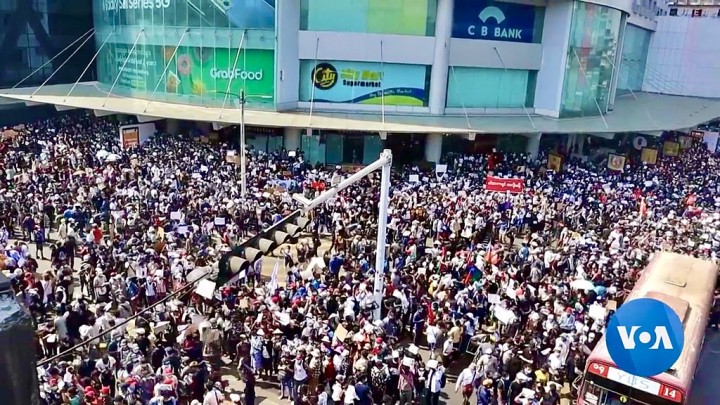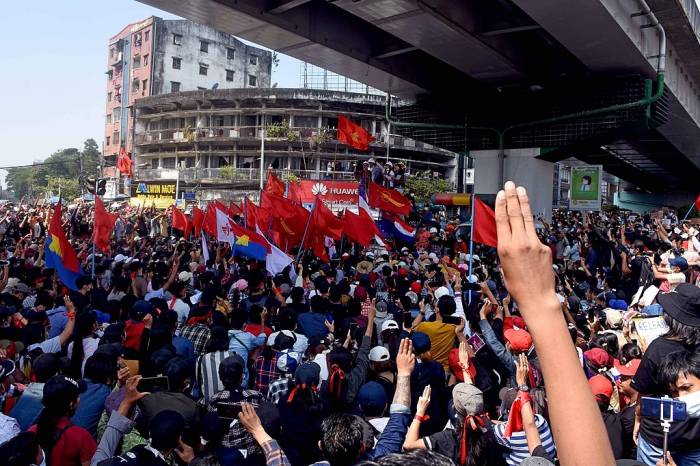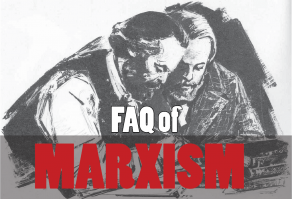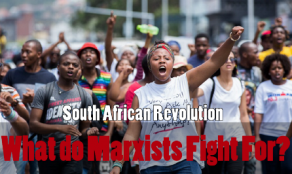A revolution is underway in Myanmar. The masses are showing immense courage in the face of brutal violence by the military junta. Workers and youth are preparing to defend themselves and allying with the organisations of oppressed ethnic groups. An armed workers' uprising and an all-out, continuous general strike must be organised to topple the murderous junta!
The brutality of the Myanmar military junta is self-evident. On Saturday (27 March) more than 100 people were killed during protests, including several children, among them a five-year-old. This was the bloodiest day since the 1 February coup, bringing the total number killed to over 400. Since then the figure has risen above 500. Videos and photos show security forces shooting indiscriminately at unarmed civilians, shooting people in the head and the back, and then dancing around in celebration.
In spite of this utter barbarism, the people of Myanmar, the workers and youth, are displaying tremendous courage and determination, coming out onto the streets, in wave after wave of protest, risking their lives on a daily basis. “They are killing us like birds or chickens, even in our homes,” Thu Ya Zaw told Reuters, at a protest in the central town of Myingyan, where at least two people were killed. “We will keep protesting regardless. We must fight until the junta falls.”
The generals showed their sheer arrogance and lack of any concern for the people of Myanmar when, on the same day as the massacre, they held a lavish party to celebrate their Armed Forces Day. There they were all suited up in their best clothes, eating rich food and drinking champagne, while ordinary working people were being shot in the streets. The callousness of these same generals could be seen the next day, when security forces attacked mourners who were attending the funeral of protestors who had been killed in the previous days.
All this is provoking huge and widespread resentment. The ordinary working people, the youth, the peasants, the ethnic minorities, are seeing people killed on the streets before their very eyes on a daily basis, and there is an increasing realisation that peaceful protest is not enough to bring down this hated regime.
Brutality against minorities and resistance by the people
The latest brutality against the minorities was seen over the weekend near the Salween River in the Mutraw district of Karen State. On Saturday night, Deh Bu Noh village in Mutraw district, was bombed, leading to at least nine deaths and several more being injured among the 10,000 people who have settled in and around the village. On Sunday, there were more bombings and around 3,000 villagers attempted to flee to Thailand, some of whom were cynically turned back by the Thai border controls.
The Karen people have been demanding self-determination for decades and know full well how brutal the Myanmar military can be. The movement of the Karen minority is led by the Karen National Union (KNU), which has its armed wing, the Karen National Liberation Army. This is one of several ethnic armed organisations that have been fighting for greater autonomy from the central government.
A similar situation exists in Kachin State on the northern border with China. Here the Kachin Independence Organization/Army (KIO/A), which is one of the most important armed groups in Myanmar, has been fighting the central state since 1961, and in recent weeks armed clashes flared up again in four townships of the state almost on a daily basis. Something similar is happening in northern Shan State.
At present, the armed ethnic groups are the only military alternative to the Myanmar army and police. In fact, in the areas where they are strong, they have been using their armed units to defend the local people on protests. On 14 February, the KNU came out officially in support of the protest movement, adding that it would protect all the protestors no matter what ethnic group they belong to, and since then it has been providing defence units that accompany the protesters on the streets.
We can see how the armed ethnic organisations are, in this way, assuming a very different role, as the youth in the big cities – mainly belonging to the Bamar majority (68 percent of the population) – have started to draw the conclusion that “peaceful protest” is going nowhere, and that what is required is an organised armed response to overthrow the military junta, and some of them are turning to the armed ethnic groups seeking help and military training.
The Guardian reported on 20 March 2021 in its article ‘Myanmar’s besieged resistance dreams of ‘people's army’ to counter junta’, how the youth are drawing revolutionary conclusions. It quotes a young protestor who explains how young people are going on YouTube to learn how to use guns, and quotes him as saying: “Yangon looks like a war zone, except only one side has weapons. That’s why we need an army. We will have to train and fight at the same time; we have no time left.” A young woman quoted in the same article says, “I would support the CRPH [Committee Representing the Pyidaungsu Hluttaw, a body that claims to be the legitimate representative of the deposed elected government] if it decided to form an army. I would force my husband and brother to join, but I need to look after my kid.”
An interesting report appeared in the New York Times on 24 March, 2021, (‘I Will Die Protecting My Country’: In Myanmar, a New Resistance Rises) which gives us an idea of what is happening:
“In a jungle in the borderlands of Myanmar, the troops sweated through basic training. They learned how to load a rifle, pull the pin of a hand grenade and assemble a firebomb.
“These cadets are not members of Myanmar’s military, which seized power last month and quickly imposed a battlefield brutality on the country’s populace. Instead, they are an eclectic corps of students, activists and ordinary office workers who believe that fighting back is the only way to defeat one of the world’s most ruthless armed forces.
“‘I see the military as wild animals who can’t think and are brutal with their weapons,’ said a woman from Yangon, Myanmar’s biggest city, who was now in the forest for a week of boot camp. Like others who have joined the armed struggle, she did not want her name published for fear that the Tatmadaw, as the Myanmar military is known, would target her.
“‘We have to attack them back,’ she said. ‘This sounds aggressive, but I believe we have to defend ourselves.’
“After weeks of peaceful protests, the frontline of Myanmar’s resistance to the Feb. 1 coup is mobilizing into a kind of guerrilla force. In the cities, protesters have built barricades to protect neighborhoods from military incursions and learned how to make smoke bombs on the internet. In the forests, they are training in basic warfare techniques and plotting to sabotage military-linked facilities.”
This is a revolution!
What we have here is a revolution taking place. There is no other way of describing it. The conclusion reached by the youth and workers – or at least the most advanced layers among them – that an armed response to the regime is required, is absolutely correct. Any revolutionary worth their salt would back them to the hilt. This is not the time to vacillate and dither on this question. There is no room for compromise with this regime. It is a question of “either… or…”: either the masses take decisive measures and go all the way to overthrow this regime, or they will face bloody consequences and a terrible defeat.
The pressure from below is growing. And that explains what the same article highlights, the fact that now the very same bourgeois liberals, who so far have left the masses defenceless, have started to call for the creation of a “Federal Army”, which would include the various ethnic armed organisations:
“…there is a growing recognition that such efforts [i.e., peaceful protest] may not be enough, that the Tatmadaw [the Myanmar army] needs to be countered on its own terms. Last week, remnants of the ousted Parliament, who consider themselves the legitimate government, said that a ‘revolution’ was needed to save the country. They have called for the formation of a federal army that respects various ethnic groups, not just the majority Bamar.”
On 14 March, the CRPH published a statement in which they explained to the people that they have the right, according to the law, to defend themselves from violence, adding that:
“The Committee sincerely recognises, records and congratulates all ethnic armed revolutionary organisations which are making efforts together in the mindset of brothers and sisters with the strong commitment to the building of a federal democratic union.”
The CRPH has also stated its aim now is to establish a “federal democratic union”.
It is truly ironic that these same bourgeois liberals have turned to the armed ethnic groups to help them in the fight against the military junta. We should not forget that, while the ethnic minorities were being bombed, raped and killed; while whole villages were being burnt down; while thousands of people were fleeing Myanmar; while a campaign of “ethnic cleansing” in Rakhine drove 700,000 people belonging to the Rohingya ethnic minority into Bangladesh; the bourgeois liberals of the NLD and Aung San Suu Kyi (also referred to as ASSK) backed the military and justified their actions.
That is why these ladies and gentlemen of the NLD cannot be trusted. They promised in the past to reach an agreement with the various ethnic minorities, but once they were in office, they betrayed them and sided with the military. Why should they be trusted this time round?
Time magazine published an article back in 2018 on the 30th anniversary of the 1988 uprising, pointing out that:
“Even under Suu Kyi’s rule, Myanmar still holds 245 political prisoners behind bars, according to AAPP [Assistance Association of Political Prisoners - Burma], 48 of them in pretrial detention. The NLD — many of its members former prisoners themselves — has continued to allow the junta’s laws to regulate free speech and assembly and muzzle critics, and has drawn international outrage for failing to condemn the military’s campaign against the Rohingya.
“‘The NLD is not a government that is respecting human rights and the kind of freedoms that people were on the streets protesting for,’ says Mark Farmaner, director of Burma Campaign U.K., a London-based rights advocacy NGO. ‘The NLD-led government [has] absolutely no interest in rectifying past wrongs’.”
The workers and youth, the peasants, the ethnic minorities, therefore, should place no trust in the bourgeois liberals. Today they pretend to be your friends, but tomorrow they will betray you. They do not defend the interests of the working masses of Myanmar. Their role is to preserve the property of the wealthy above any other concerns. That is the reason why they compromised with the military in the first place.
No class compromise: for an armed workers’ uprising
The working people of Myanmar can only count on their own forces. There is immense revolutionary potential among the courageous Myanmar masses, as can be seen every day on the streets. There have been powerful strikes, including general strikes. There have even been some cases of police officers deserting and fleeing into India rather than shoot their own people. But for revolutionary potential to become a successful revolutionary taking of power by the masses, what is required is a mass workers' revolutionary party capable of bringing together all the forces that could successfully overthrow this regime. Such a party today would be issuing a call for revolutionary action, including armed action.
After more than 500 protestors have been killed by the Myanmar military, among them young children, there is no room whatsoever for compromise with the army. What is required is an armed response to the terror of the military. The question is: what kind of armed response?
Here is some good advice that Lenin gave to the workers and youth of Russia in 1905 after the Tsar’s Imperial Guard fired on unarmed workers, killing over 1,000 and injuring around 2,000 more on what became known as “Bloody Sunday”, (Sunday, 22 January 1905) in St. Petersburg. The mood before that day was one of peaceful protest and of seeking to petition the Tsar. After the massacre, that mood changed overnight to one of wanting arms to fight back. Their indignation was indescribable.
Lenin did not play with words. He did not talk of “peaceful protest”. No, the time for peaceful protest was over, and this is what he wrote:
“They must arm themselves as best they can (rifles, revolvers, bombs, knives, knuckle-dusters, sticks, rags soaked in kerosene for starting fires, ropes or rope ladders, shovels for building barricades, pyroxylin cartridges, barbed wire, nails [against cavalry], etc., etc.). Under no circumstances should they wait for help from other sources, from above, from the outside; they must procure everything themselves.”
Lenin wrote this in his 1905 article, Tasks of Revolutionary Army Contingents, and I would advise any thinking youth in Myanmar today to read the whole text.
We should also remember, however, that the most revolutionary layers of the Myanmar youth in the past drew similar conclusions. After the brutal military clampdown on the 1988 movement, many students left the cities and went into the jungle of the border regions to get training from ethnic armed groups, or into neighbouring Thailand. The All-Burma Democratic Students Front took up arms, and organised a decades-long armed struggle, but they failed in their attempts to overthrow the military regime and they were betrayed and crushed, in what were very difficult conditions on the ground, with rampant disease, supply shortages and scant weaponry.
The idea, therefore, of creating an alternative federal army in the present conditions is a step forward. It would need to bring in all the oppressed layers of Myanmar society, who are the overwhelming majority of the population. The ethnic minorities have been oppressed for decades and some of them have been involved in guerrilla warfare against the central authorities. Their demands for greater autonomy should be recognised by the protest movement, and the right of self-determination should be raised by the Bamar workers as a way of overcoming the years of mistrust that has been consciously promoted by the military.
The peasants in the rural areas have been involved in ongoing struggles against land-grabbing both by the military and multinational corporations. The peasants have every reason to join such an army, and they can play an important role in backing the movement in the cities. This means recognising the rights of the peasants to have control over their own lands.
We have to ask ourselves, however, what the overall aims of such a federal army would be. Can it limit itself to simply removing the military and putting the NLD and ASSK back in office? If that is the case then the movement can only expect to be betrayed again by the bourgeois liberals. These people are caught between the huge wave of anger among the masses who have a burning desire to remove the military on the one hand, and the pressures of the wealthy class of capitalists on the other, both foreign and domestic, who want to guarantee the continuity of their system.
The point is that you cannot serve two masters. The interests of the workers and peasants are not the same as those of the factory owners. Any class compromise in this situation will end up with those at the bottom losing out. Yes, they may succeed temporarily in removing the generals from power, but will they proceed to expropriate the army officers? Let us not forget that the military officer caste is also an important part of the Myanmar capitalist class. Will they root out all the officers and destroy completely the army apparatus as it now exists? When they were last in office they didn’t do so. No, all you can expect from these people is another betrayal.
What is required is an independent organisation of the Myanmar working class. The workers already have trade unions, but unfortunately, these are mostly led by bureaucrats who are tied hand and foot to the NLD, i.e., to the political expression of the capitalist class: the factory owners, who oppress the workers on a daily basis. Some trade union leaders, such as in the garment workers’ union, have stood out as being more militant, but the bulk of the trade union leaders only moved when the rank-and-file workers began putting pressure on them.
These so-called “leaders” have issued appeals to the United Nations and even to the United States, sowing illusions that the “western democracies” were going to save the situation. In our previous article on Myanmar we explained that “beyond a few words of condemnation and some sanctions imposed on a few individuals at the top of the military regime, the United States is not going to send any military forces to Myanmar”. The people have had to learn the bitter lesson of the truth of these words.
All-out extended general strike
What is required is an all-out struggle to bring the military junta down with working-class methods. That means organising an all-out general strike. There have been several general strikes that have revealed the huge support for such action among the mass of workers in Myanmar, but in a situation like this, partial one- or two-day general strikes are not enough. What is required is a total shut-down of the economy, an all-out extended general strike.
The workers have the power to do this. They could block all rail and road transport; they could block the ports; they could shut down the power supply, and the distribution of fuel, and with such methods they could paralyse the army itself. Such a general strike would have to be accompanied by the occupation of all the workplaces and schools and universities, together with the occupation of all centres of administration. If such a general strike were organised in every corner of Myanmar, in every state, every city, every village, uniting all the working people, the Bamars and all the ethnic minorities, the army would not have enough forces to repress the whole people.
 For an all-out general strike! For an armed workers’ defence force! Prepare an armed people’s uprising to overthrow the junta! / Image: VOA Burmese
For an all-out general strike! For an armed workers’ defence force! Prepare an armed people’s uprising to overthrow the junta! / Image: VOA Burmese
For such a general strike to be successful it would also require the election of strike committees in every workplace, and neighbourhood committees in all the city neighbourhoods and villages. These bodies could take over the running of affairs locally. In turn, these committees would require coordination up to a national committee, which would become the expression of workers’ and peasants’ power in the country. It would send a message to the masses that now there is a genuine revolutionary leadership, elected and controlled by the masses themselves.
However, all this would need to have the clear aim of organising a mass armed uprising of the people. That is why an armed workers’ self-defence force – a workers’ militia – under the control of the strike committees is an urgent task before the movement. Many, including the bourgeois liberals in Myanmar and even the governments of the imperialist countries in the West, are saying that the actions of this military junta are criminal. Well, if their actions are indeed criminal, then the masses have every justification in seeking arms to fight back against these criminals.
The Myanmar labour organisations should be appealing to the workers’ organisations in other countries for help, not in the form of formal resolutions or in words of protest, but in concrete action. Combined with an all-out general strike inside Myanmar there should be an international workers’ boycott of the country. In our previous article, quoted above, we gave examples of worker boycotts in the past. Such a boycott campaign would get an enormous boost if the workers’ organisations in Myanmar called for such action.
The workers’ movement in other countries should also be consciously organising to raise funds to help the Myanmar workers and youth get the weapons they need to fight this brutal regime. We have a historical precedent in Spain in the 1930s. When Franco organised his coup, the workers and peasants rose up in arms and fought the fascists. And workers across Europe and beyond came to the aid of their Spanish brothers and sisters, helping them to procure the guns they needed. The fact that the Spanish workers and peasants finally went down to defeat was due to the mistaken policies and programme of the workers’ leaders, who precisely trusted the bourgeois liberals, who played a treacherous role. The main point, however, is that the workers of other countries did everything they could to help the revolution in Spain. That is what is required today.
If an all-out general strike, combined with a decisive call for an armed uprising, were to be organised, it would send a clear message also to the ranks of the police and army. We have seen some police officers fleeing to India to avoid having to shoot at their own people. But what is required is not flight across the border, but going over to the movement with their guns. As The Guardian article quoted above points out, “A successful armed resistance would probably require defections of military or police units who brought over their weapons…”
A clear lead from the organised working class could transform the potential for sections of the military and police to break ranks and turn against their own officers into a reality. That would begin to tip the balance in favour of the movement and begin the process of the arming of the working class as the only way of ending the nightmare the Myanmar masses are facing today.
For an all-out general strike!
For an armed workers’ defence force!
Prepare an armed people’s uprising to overthrow the junta!



